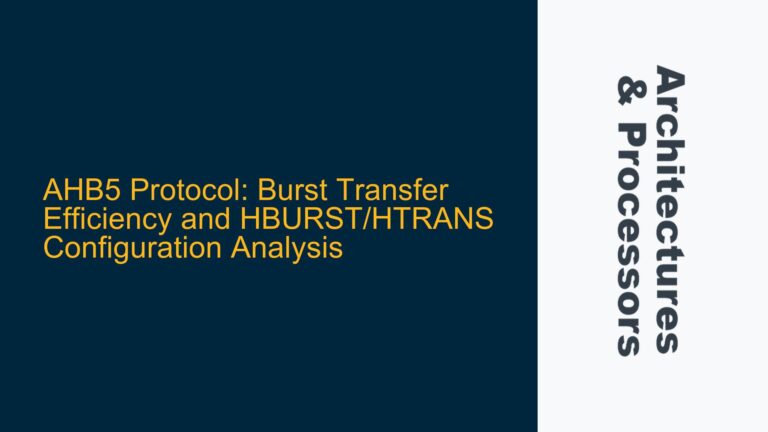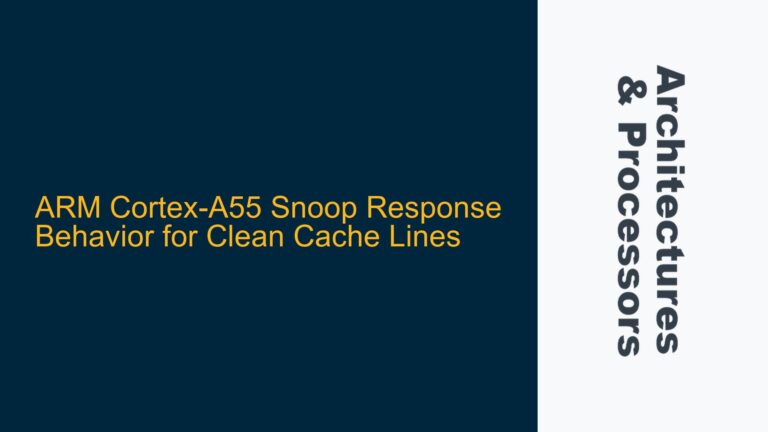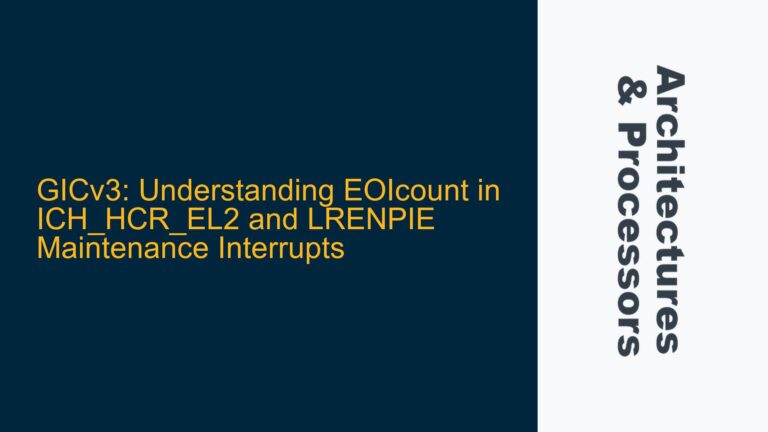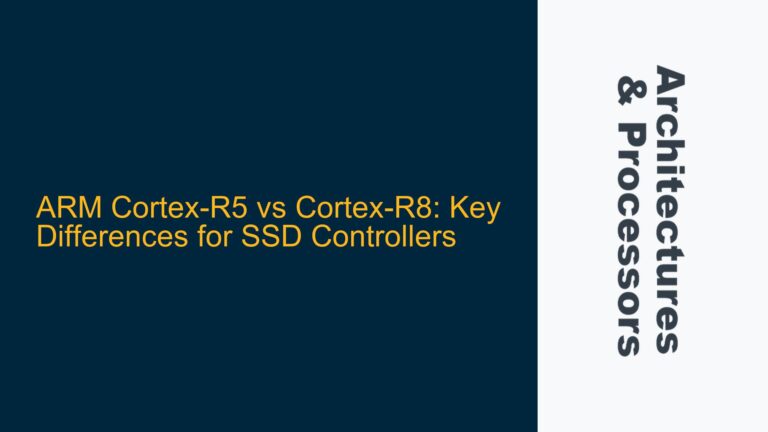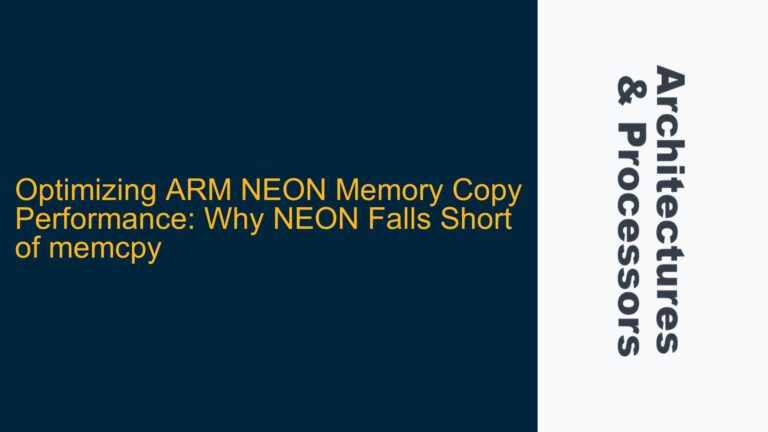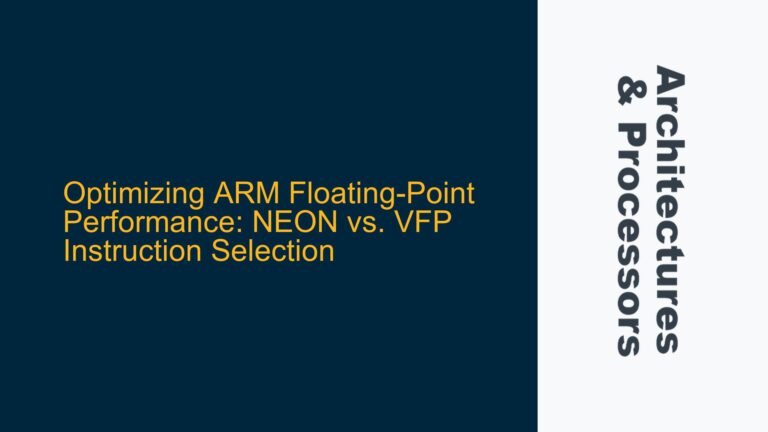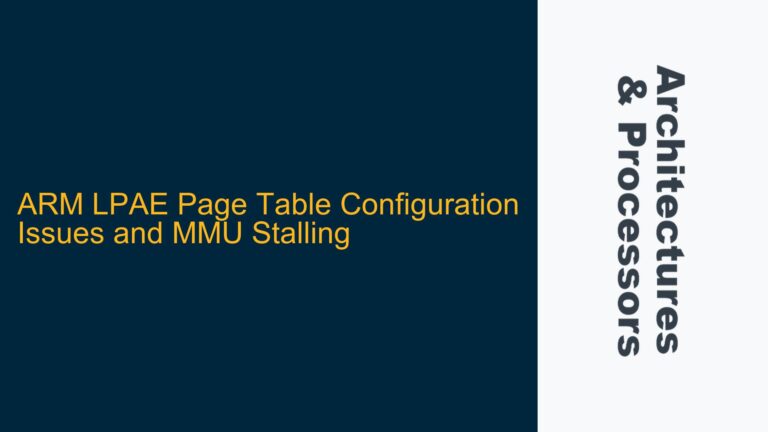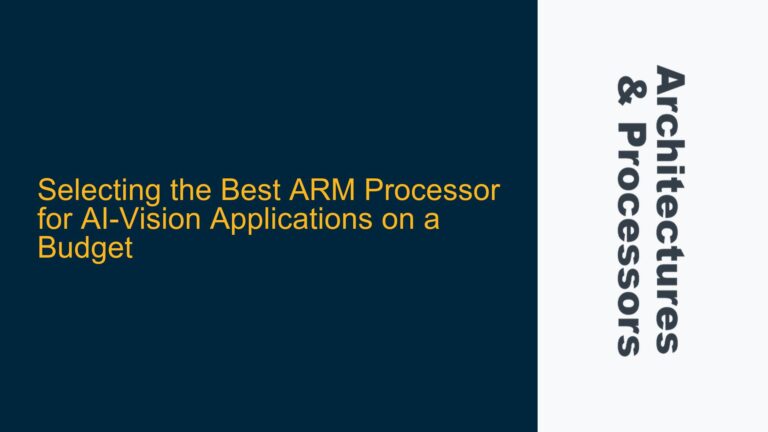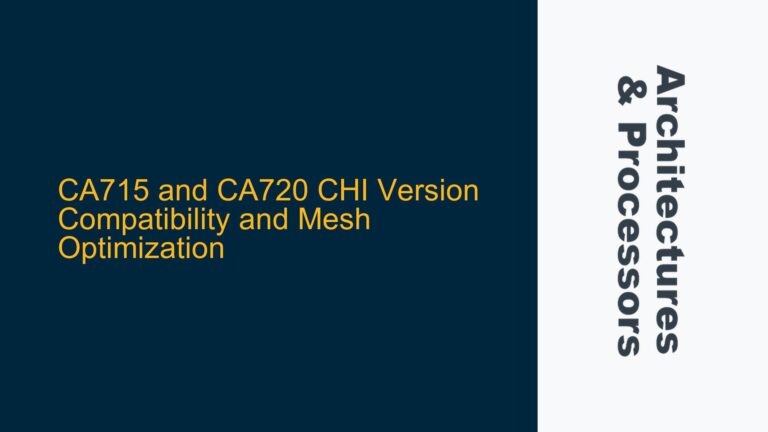AHB5 Protocol: Burst Transfer Efficiency and HBURST/HTRANS Configuration Analysis
Understanding AHB5 Burst Transfers: SINGLE vs. INCR with NONSEQ and SEQ The AHB5 protocol, a key component of the Advanced Microcontroller Bus Architecture (AMBA), is widely used in ARM-based systems for high-performance data transfers between masters and slaves. One of the critical aspects of AHB5 is its support for burst transfers, which allow multiple data…
